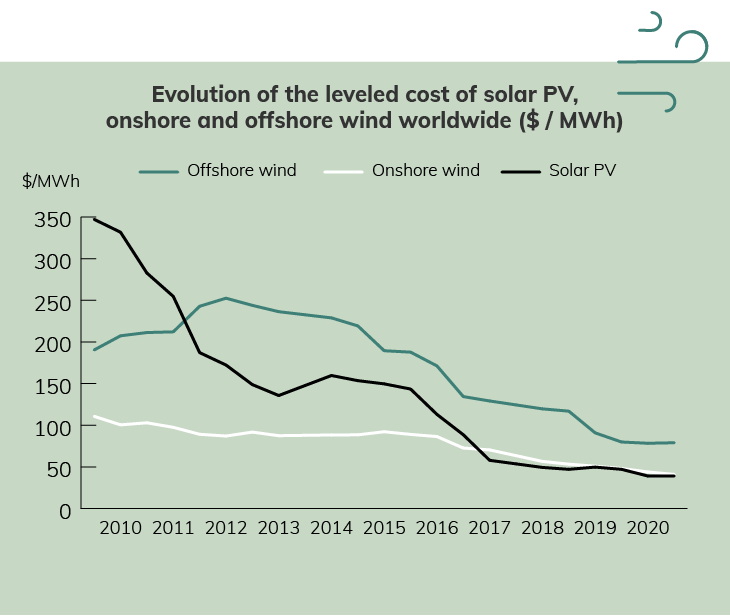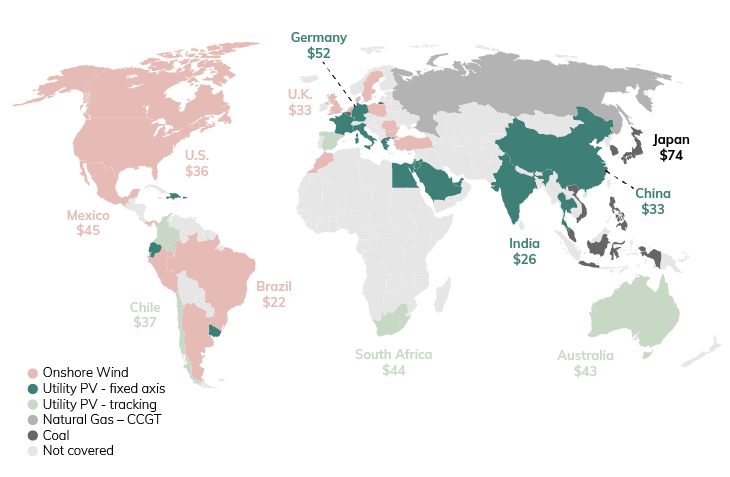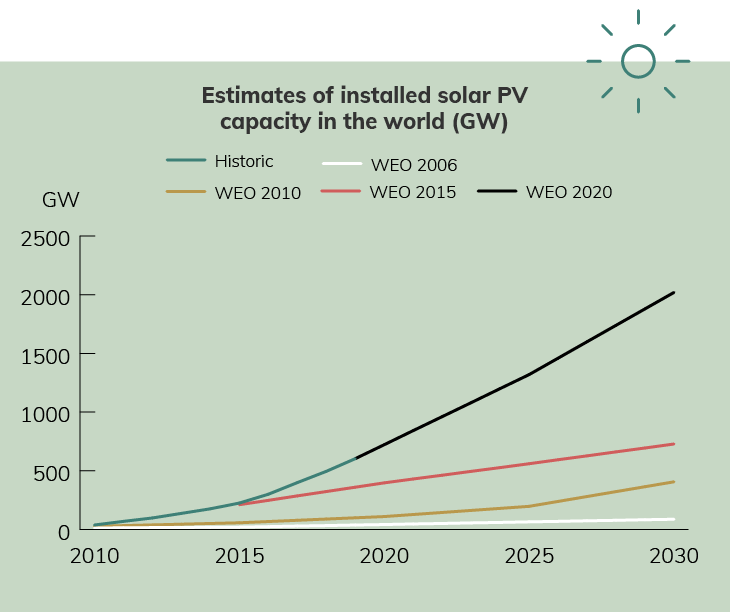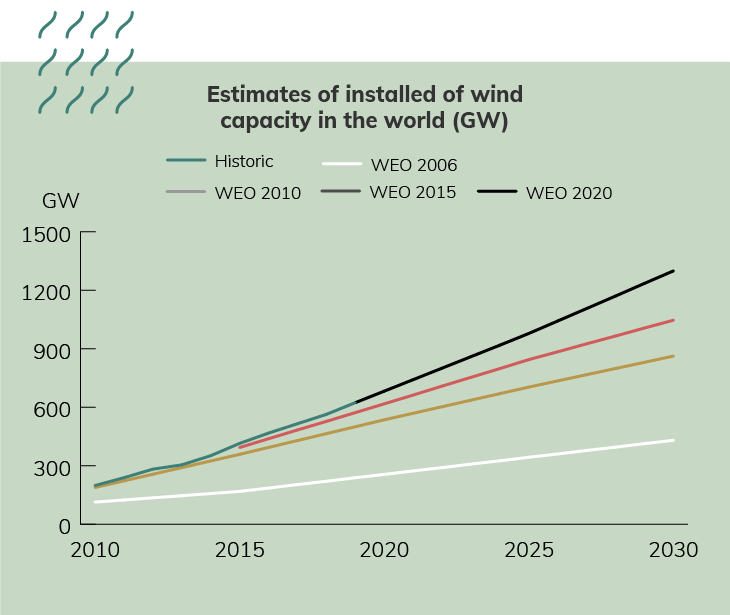The cost of producing electricity from renewable energies has been falling and this downward trend is expected to continue in the coming years.
Some sources of renewable energies are, already, more economical than fossil fuels.
According to data from Bloomberg New Energy Finance, within a decade, the levelized cost of onshore wind has decreased by about 60%, while the cost of photo-voltaic solar has dropped by about 90%. In the past, the installation of these technologies represented an extra cost for the electrical system, since the average cost of production was higher than the wholesale price of electricity (which, in turn, reflects the variable costs of thermal power plants). However, the economic incentive given to these renewables at the technological maturation stage, was crucial to promote their development and obtain the scale gains throughout the value chain, which allowed these technologies to become more competitive.
In the case of offshore wind (when the infrastructure is located at sea) there has also been a sharp drop in the technology costs, but it is still at a less advanced stage of development when compared with the other two mentioned. Despite that, offshore wind power has great potential, both for the available areas for the installation of these farms, and for the wind resource itself, which is more abundant and stable at sea.

Source: BloombergNEF
All LCOEs calculations are unsubsidized. Global benchmarks are country-weighted averages using annual capacity additions, except for offshore wind where the cumulative capacity is used.
Wind and solar energy are the most competitive
The competitiveness gain of electricity production through renewable energy sources - namely onshore wind and solar photo-voltaic, which are the most mature technologies - was such, that they are already more economical than producing electricity using fossil fuels, in many regions of the world (Figure 2).

Source: BloombergNEF
The incentive for investment
The reduction in production costs has meant that, currently, onshore wind and solar PV energy no longer need to be subsidized in many regions of the World, what they need is to have visibility and stability on revenues in the long term. This is because the cost structure of renewables is essentially fixed (which means, independent of the volume of energy produced), and thus renewables promoters need predictability of cash flows to have access to financing at competitive costs.
That is why, in recent years, most countries have chosen to introduce competitive market mechanisms to define the long-term remuneration of these renewables, namely through auctions. In the case of Portugal, for example, two solar capacity auctions were held, one in 2019 and the other in 2020. In both, the current world record for the minimum price of solar energy was broken, with € 14.80 / MWh and € 11.40 / MWh, respectively. And the ones who stand to gain are the Portuguese customers, as these new additions of solar capacity will bring significant savings over the next decade.
Another mechanism, increasingly used to remunerate renewable energies, are corporate power purchase agreements (PPAs) . In practice, these are bilateral contracts between a producer, who develops the renewable plant, and a company, which wants to buy green electricity for its activity, while stabelizing the costs with the purchase of electricity for several years.
Estimates for evolution of wind and solar capacity are constantly being revised upwards
The growing competitiveness of renewables means that, all over the world, the targets for installed renewable capacity are constantly being exceeded and future estimates being revised upwards. According to the International Energy Agency, which annually publishes the "World Energy Outlook" (WEO), the forecasts up to 2030 point to a significant increase in the worldwide wind and solar PV capacity.


Source: International Energy Agency
Assumes linearization of capacity over the range years in which estimates are done.
In summary, the strong gain in competitiveness of renewable sources over the last decade allows that new additions of these technologies can currently translate into significant savings for electricity consumers. Additionally, renewables make it possible to improve, not only the environment, but also the economy, promoting the creation of local jobs and improving the country's trade balance by avoiding fossil fuel imports.

